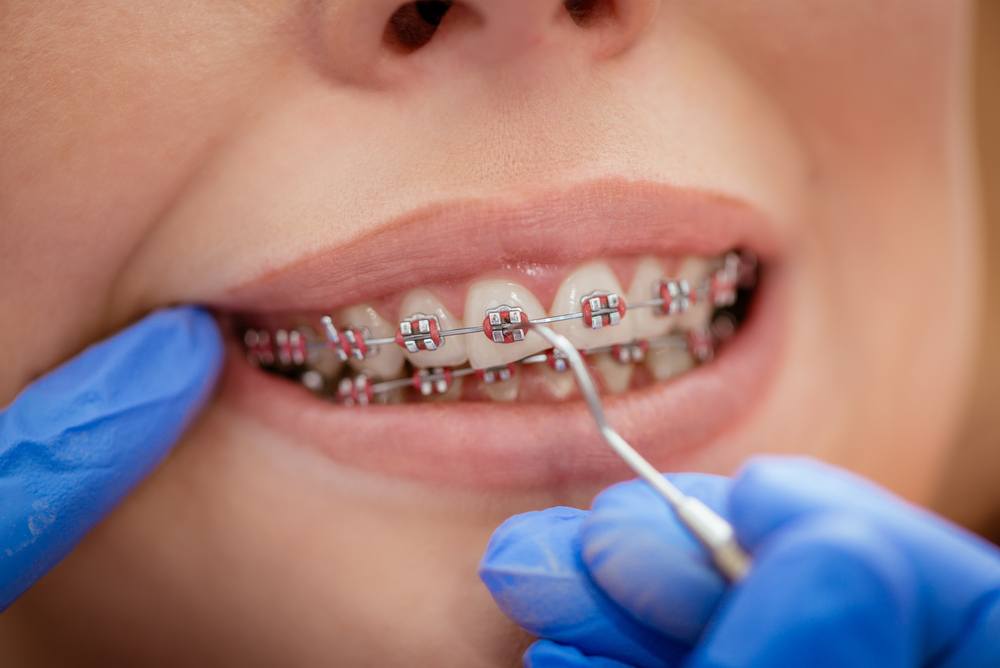What Establishes Cumming Braces and Aligners Aside From Various Other Orthodontic Treatments
What Establishes Cumming Braces and Aligners Aside From Various Other Orthodontic Treatments
Blog Article
Comprehensive Overview to Orthodontics Treatments for Dealing With Dental Imbalances
Comprehending the ins and outs of each procedure, including their devices, benefits, and prospective downsides, is important in making informed decisions concerning one's orthodontic treatment. As we navigate via the detailed guide to orthodontic procedures for remedying oral misalignments, the intricate information of each technique will certainly unravel, shedding light on the path towards a unified and useful dental positioning.
Orthodontic Procedures Introduction

Along with traditional dental braces and clear aligners, orthodontists may also recommend various other treatments like headwear, palatal expanders, or retainers to resolve certain placement concerns (braces). These procedures are customized to every individual's one-of-a-kind demands and may entail a mix of therapies to accomplish the preferred outcomes. Normal changes and tracking are crucial components of orthodontic treatment to guarantee development is on track and to make any type of necessary alterations along the road. By undertaking orthodontic procedures, patients can not just attain a straighter smile but additionally enhance their overall dental wellness and feature.
Conventional Braces: Exactly How They Function
When thinking about orthodontic treatments for oral imbalances, traditional braces stand out as a reliable approach for correcting teeth placing. Standard dental braces consist of brackets, wires, and bands that function together to use continuous stress on the teeth, gradually relocating them right into the desired placement.
As pressure is applied to the teeth with the dental braces, the bone surrounding the teeth is improved to sustain the new tooth placements. Clients will certainly require regular changes at the orthodontist's office to guarantee the braces proceed to use the right pressure for reliable teeth activity.
Invisible Aligners: Cons and pros
These clear, personalized trays are essentially undetectable when put on, making them an attractive choice for individuals seeking a much more aesthetically pleasing orthodontic therapy. Individuals can remove the aligners prior to consuming or brushing their teeth, decreasing the danger of food obtaining stuck in the home appliance and streamlining the cleansing process.

Surgical Orthodontic Options
Surgical interventions in orthodontics existing feasible options for attending to complicated oral misalignments that may not be successfully fixed via conventional orthodontic therapies. While typical braces and undetectable aligners can remedy many orthodontic problems, certain instances require medical treatment to achieve ideal outcomes. Surgical orthodontic options are normally advised for severe malocclusions, significant jaw inconsistencies, and cases where the underlying bone structure requires adjustment to achieve proper placement.
One usual surgical orthodontic treatment is orthognathic surgical procedure, which involves repositioning the jaws to correct useful concerns such as difficulty chewing or talking. This surgery is commonly carried out in cooperation with an orthodontist that aids align the teeth before and after the procedure. Surgical orthodontics may likewise entail treatments to expose influenced teeth, get rid of excess gum our website tissue, or reshape the jawbone to produce an extra unified facial account.
Prior to taking into consideration medical orthodontic options, patients undergo an extensive examination to determine the requirement and prospective benefits of such interventions. aligners. While surgery might appear daunting, it can substantially boost both the feature and appearances of the smile in instances where standard orthodontic therapies fall short
Retainers and Post-Treatment Care

Post-treatment treatment entails following the orthodontist's instructions diligently. This may consist of correct oral health practices, attending follow-up visits, and wearing the retainers as recommended. Failing to follow post-treatment treatment guidelines can result in relapse, where the teeth progressively move back in the direction of their original positions. Consistent retainer wear, excellent dental hygiene, and normal dental exams are necessary for preserving the outcomes achieved through orthodontic surgery and guaranteeing the long-lasting stability of the corrected dental placement.
Verdict
To conclude, orthodontic treatments use numerous choices for remedying dental misalignments. Traditional dental braces make use of steel brackets and cables to change teeth right into correct alignment. Undetectable aligners provide a more discreet option however might not appropriate for all cases. Surgical orthodontic alternatives are offered for much more severe imbalances. Retainers are typically utilized post-treatment to preserve the brand-new positioning. Overall, orthodontic procedures can effectively improve dental health and wellness and visual look.
As we navigate via the extensive guide to orthodontic procedures for remedying dental imbalances, the complex details of each technique will certainly unfold, losing light on the path towards a practical and harmonious dental positioning. - aligners
One of the most usual orthodontic treatments is the usage of braces, which important link consist of steel brackets and cables that use gentle stress to slowly move teeth into the desired position.When considering orthodontic treatments for dental misalignments, conventional dental braces stand out as a time-tested technique for remedying teeth positioning. Furthermore, unseen aligners may not be appropriate for complex orthodontic issues that require even more substantial teeth movement, as they are normally advised for mild to moderate situations. Retainers are personalized orthodontic devices made to hold teeth in their remedied settings after the completion of orthodontic therapy.
Report this page